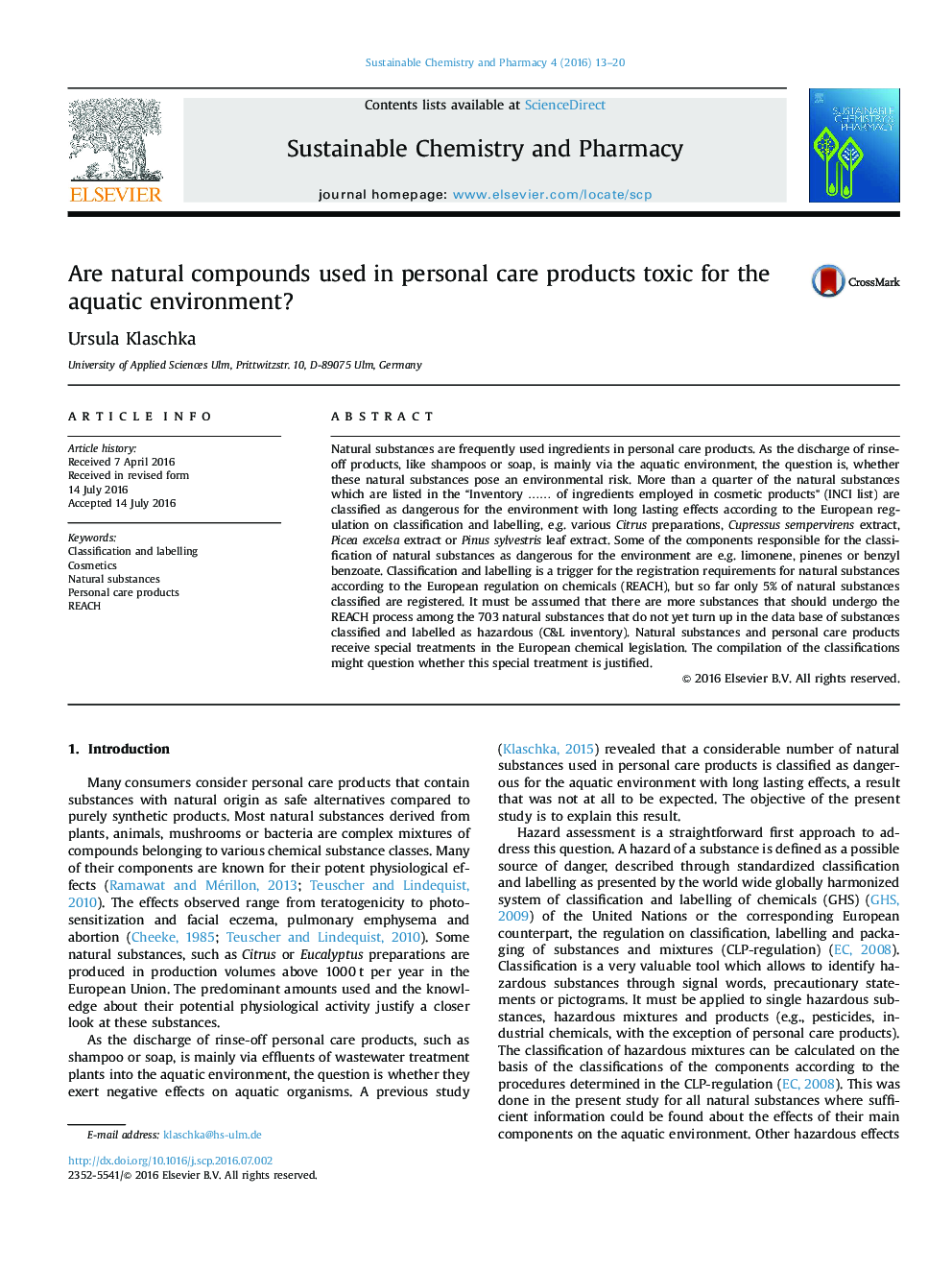| Article ID | Journal | Published Year | Pages | File Type |
|---|---|---|---|---|
| 4434493 | Sustainable Chemistry and Pharmacy | 2016 | 8 Pages |
•Many natural substances used in cosmetics are dangerous for the environment.•Their classifications and substance identities are often inconsistent.•Data on components of natural substances are rarely enough for classification.•Dangerous constituents of natural substances contribute to aggregate exposure.•Special waivers for natural substances in chemical legislation must be questioned.
Natural substances are frequently used ingredients in personal care products. As the discharge of rinse-off products, like shampoos or soap, is mainly via the aquatic environment, the question is, whether these natural substances pose an environmental risk. More than a quarter of the natural substances which are listed in the “Inventory …… of ingredients employed in cosmetic products” (INCI list) are classified as dangerous for the environment with long lasting effects according to the European regulation on classification and labelling, e.g. various Citrus preparations, Cupressus sempervirens extract, Picea excelsa extract or Pinus sylvestris leaf extract. Some of the components responsible for the classification of natural substances as dangerous for the environment are e.g. limonene, pinenes or benzyl benzoate. Classification and labelling is a trigger for the registration requirements for natural substances according to the European regulation on chemicals (REACH), but so far only 5% of natural substances classified are registered. It must be assumed that there are more substances that should undergo the REACH process among the 703 natural substances that do not yet turn up in the data base of substances classified and labelled as hazardous (C&L inventory). Natural substances and personal care products receive special treatments in the European chemical legislation. The compilation of the classifications might question whether this special treatment is justified.
Graphical abstractFigure optionsDownload full-size imageDownload as PowerPoint slide
